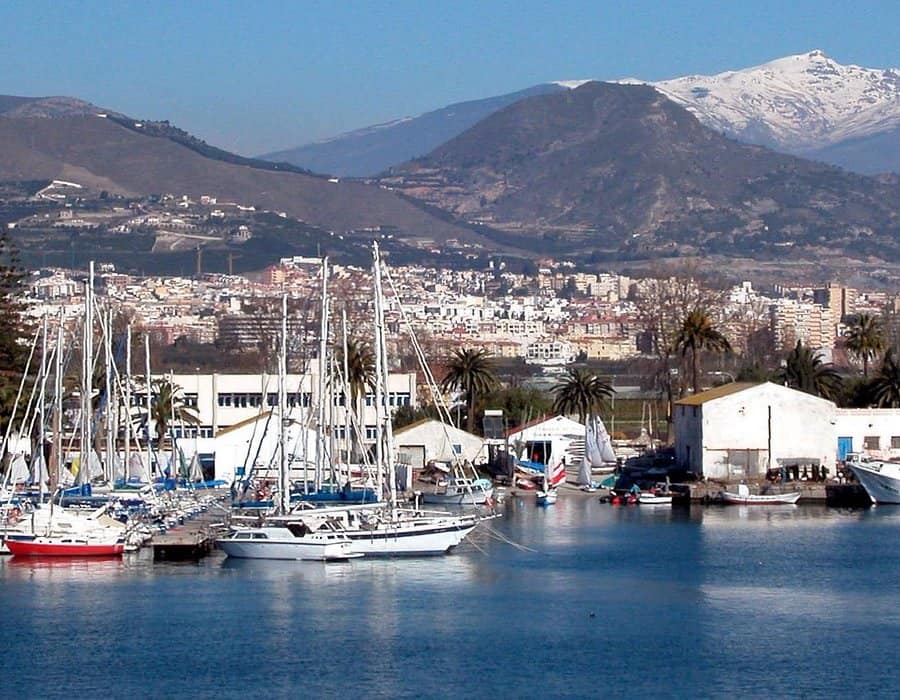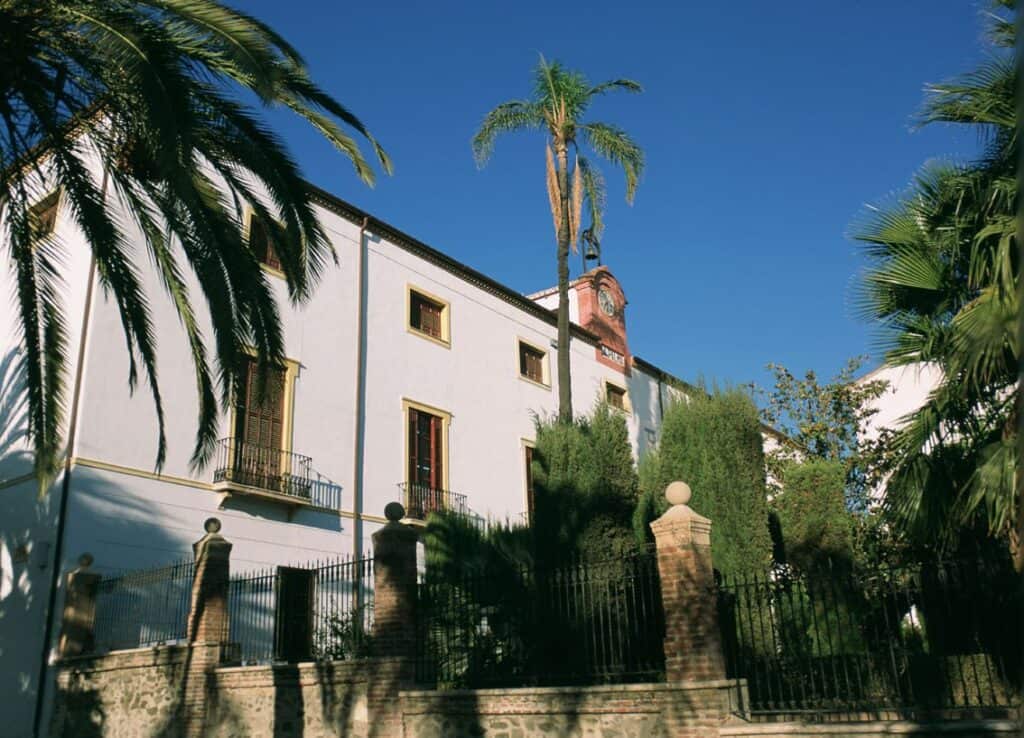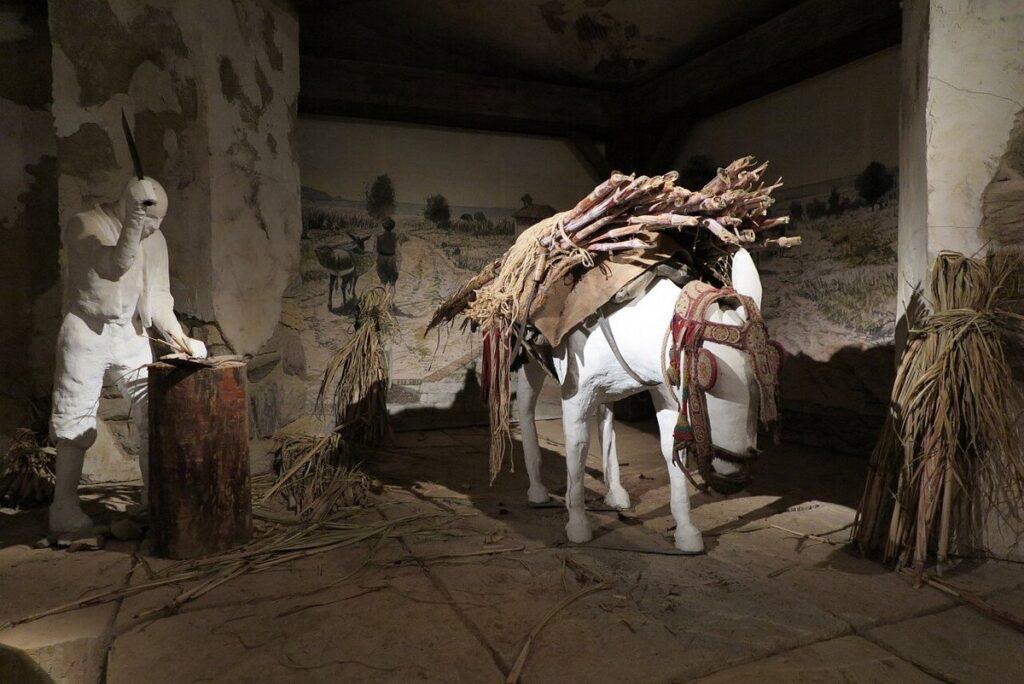- Home
- Listings
- Things To See & Do
- Car Hire
- News
- Properties
- What’s On
ES
Motril
Exploring the Charms of Motril: A Hidden Gem in Granada
Nestled along the picturesque coastline of the Granada province in Spain, Motril stands as a captivating town waiting to be discovered by travelers seeking a unique blend of history, culture, and natural beauty. While often overshadowed by its more famous neighbors, Motril offers a delightful escape that promises to enchant every visitor.

Sun-Kissed Beaches and Coastal Beauty
Motril boasts a sun-kissed coastline that stretches along the Mediterranean Sea, featuring golden sandy beaches and clear blue waters. Playa Poniente and Playa Granada are the stars of the show, offering a tranquil retreat for sunbathers, water sports enthusiasts, and beachcombers alike. The gentle sea breeze and the stunning backdrop of the Sierra Nevada mountains create a serene and picturesque atmosphere that beckons visitors to unwind and relax.
Historical Treasures and Cultural Heritage
As you wander through the charming streets of Motril, you’ll encounter a rich tapestry of history and culture. The town’s historic center showcases its Moorish legacy, with narrow winding streets, whitewashed buildings, and intricate architectural details that transport you back in time. The Church of Nuestra Señora de la Cabeza, with its stunning Mudejar-style tower, stands as a testament to the town’s diverse cultural influences.
The Flavorful Essence of Andalusia
Motril’s gastronomy is a journey into the heart of Andalusian flavors. With its proximity to the Mediterranean, the town offers an abundance of fresh seafood, from succulent grilled sardines to exquisite seafood paellas. The local tapas scene is also vibrant, allowing you to savor an array of traditional dishes while immersing yourself in the warmth of local hospitality.
Tropical Treasures: Sugarcane and Exotic Fruits
Motril’s fertile lands are home to a unique agricultural treasure: sugarcane. The surrounding fields are adorned with swaying sugarcane stalks, a testament to the town’s historical ties to this valuable crop. Beyond sugarcane, Motril is known for its subtropical microclimate that nurtures the growth of exotic fruits like mangoes, avocados, and custard apples. A visit to the local markets offers a chance to indulge in these flavorsome treats.
Festivals and Traditions
Throughout the year, Motril comes alive with vibrant festivals and celebrations that showcase the town’s spirited soul. The Fair of Motril, held in August, is a dazzling event filled with flamenco music, traditional costumes, and lively street parades. This is an opportunity to experience the true Andalusian spirit and join in the revelry alongside locals.
Gateway to Granada’s Splendors
While Motril itself is a destination of enchantment, its strategic location also makes it an ideal base for exploring the wider Granada province. From here, you can embark on a journey to the majestic Alhambra Palace, the stunning landscapes of Sierra Nevada National Park, and the charming villages that dot the countryside.
In Motril, the warmth of the Mediterranean sun meets the authenticity of Andalusian culture, creating an unforgettable experience for travelers. Whether you’re seeking relaxation on the beach, a taste of local flavors, or a journey into history, Motril promises to leave an indelible mark on your heart and memories.
Places to visit in Motril
Casa de la Palma

Casa de la Palma, a historic landmark in Motril, serves as a cultural hub today while reflecting the city’s rich history. Originally built in the 16th century as a sugar mill by Jerónimo Cebtini, the building has witnessed significant historical events, including the expulsion of the Moriscos and the French invasion. Over the centuries, it has changed ownership, with the Victoria family adding a clock tower in the 19th century, earning it the nickname “Casa del Reloj de Victoria.” Now, the building houses the UNED campus, Municipal Library, and the Preindustrial Sugar Cane Museum, while its peaceful garden offers a relaxing spot for visitors. To learn more, click below.
Museum of Pre-industrial Sugar Cane (Museo Preindustrial de la Caña de Azúcar)

The Sugar Cane Museum in Motril offers an insightful look into the history of sugar production, focusing on its development and impact from the 13th to the 18th centuries. Through detailed models of mills and presses, as well as recreated cooking and purifying rooms, the museum highlights the techniques and labor involved in sugar-making. It emphasizes Motril’s significant role in the global sugar industry, showcasing the evolution of technology and the cultural importance of sugar production. Notably, the museum houses Europe’s oldest mill, underscoring its commitment to preserving the region’s rich history. Open: Summer (June 15th through September 15th): Tuesday to Thursday 10am to 2:30pm and 6pm to 8pm. Friday and Saturday: 10am to 2:30pm / 6pm to 8pm. Winter: September 16th through June 14th: 10am – 2pm / 4pm -7pm. Sunday 10am-2pm. Guided tour available in Spanish, English, French or German languages. Fee: 3 euros
Address: Museo del Azúcar de Motril, calle Zafra, 6, 18600, Motril. Tel: 958 822 206. Email: museodelazucar@motril.es. Visit website.
Museo de Historia de Motril (Museum of History of Motril)

At the Museum of History of Motril (MHIMO), local history is told in a didactic and direct manner, using new audiovisual technologies. The visit to this historical 17th-century building, restored to house this museum, begins with the welcome of various characters from the history of Motril. On the first floor, it covers everything from prehistory to the first major cycle of sugar, including Muslim Motril, the conquered city, and the city’s struggle against pirate attacks. On the second floor, we find innovations in crops and the Enlightenment movement that influenced Motril society.
We can also discover the process of Enlightenment, the crisis in sugar production, and the civil war in Motril. The visit concludes with a tour of its more recent history.
Contact info
Location:C/ Cardenal Belluga 14, 18600 Motril
Email: museodehistoria@motril.es
Tel:958 603 224
Opening hours:
Tuesday to Thursday: 10:00 am to 2:00 pm.
Friday and Saturday: 10:00 am to 2:00 pm / 5:30 pm to 7:30 pm.
Sunday and Monday: Closed
Guides are available for visitors in various languages for self-guided tours.It also offers educational booklets for students at different educational levels, as well as answer guides for teachers. Information brochures about the museum are available in various languages. Access to the Temporary Exhibition Hall is free.
General Admission: €3
Reduced Admission: €2 (visitors under 35 years old, over 65 years old, groups of 20 people or more, Disabled individuals.
Parque de los Pueblos de America (Park of the Peoples of America)

The Park of the Peoples of America is located to the south of the urban center of Motril, at the foot of the Hill of the Santuario de Ntra. Sra. de la Cabeza. It is one of the city’s main green lungs. This park is a landscaped area of almost 34,000 square meters. Due to the subtropical climate, this park serves as a link with the American continent, which is reflected through its flora. As you stroll through the park, along its paths, you can appreciate a wide variety of tree species, shrubs, and palm trees, all originating from different parts of America, each with its explanatory panel.
Noteworthy is the walk under the Washingtonia palm grove, or under the tranquil shade of the jacarandas that burst into purple in spring, alongside Bougainvilleas, lantanas, and nearly half a dozen species such as the Ombu, Liquidambar, Sabal, Eritrinas, Plumerias, etc. Its splendor is enhanced by the two decorative fountains in the northern area, its artificial river crossing it from north to south ending in a lake with a geyser, and the sculptural ensemble depicting the Encounter between the two worlds.
Near the lake, there is a stage for concerts, and very close to them, a playground and spaces for skateboarding, cycling, and skating. You can grab a refreshment at the kiosk-bar.
Opening time: 10am – 00:00.
Address:Plaza de las Comunidades Autónomas, s/n, 18600, Motril
Jardín de Cactus Teresa

The Jardín de Cactus Teresa is a charming botanical space located in the city of Motril. This garden, dedicated to the memory of Teresa Ortiz Vázquez, a lover of nature and cacti, is an oasis of beauty and tranquility in the heart of the Costa Tropical. Its establishment was made possible by the donation of nearly six hundred plants from the private collection of Manuel Soler, a biologist and professor at the University of Granada, known for numerous publications in specialized journals and books. He was a distinguished scientist and head of the Zoology department at the university, who continued to cultivate these plants after his wife Teresa passed away in a traffic accident. She was a true cactus enthusiast, a passion that he inherited and maintained.
The garden houses an impressive collection of cacti and succulents from various parts of the world, with more than 1000 different species. They have been carefully cultivated to create a unique and exotic environment. Visitors can stroll along winding paths, admiring a diverse range of shapes, colors, and sizes of cacti, from the columnar and spiky forms of cacti to the lush and curious shapes of succulents. It is considered one of the best collections of this type of plants. Currently, this collection of cacti and succulents continues to expand, aiming to become one of the most important natural spaces in Europe for the conservation of cactaceae plants.
The tranquil and peaceful atmosphere of the Jardín de Cactus Teresa makes it an ideal place to relax and immerse oneself in the beauty of nature. This botanical garden is a true treasure that combines a love for cacti with the natural beauty of the Costa Tropical. It is a delightful destination for nature lovers, amateur gardeners, and anyone seeking a corner of serenity and wonder in the province of Granada.
Opening time: from Monday to Friday, from 8:00 am to 1:00 pm
Address: Cañada de Motril 11, 18600, Motril
The cactus and succulent garden is located in the southeast of the Parque de los Pueblos de América. Admission is free. Group visits are available by prior appointment, arranged via email at cj.captussuculentasteresa@motril.es or through the Motril Tourist Office.
Santuario de Nuestra Sra. de la Cabeza

The Sanctuary of Our Lady of the Head in Motril holds great spiritual and cultural significance for the local community. Built on the ruins of a Nasrid castle, it was once the residence of Queen Aixa Alhorra, the mother of Boabdil. According to tradition, the Sanctuary of the Virgin of the Head in Motril stems from the legend of Portuguese sailors who, in the early 16th century, stole the image of the Virgin from Corinth. While sailing back to their homeland, they encountered a fierce storm and, fearing for their lives, promised the Virgin to build a hermitage where they would safely disembark. After six days, the ship ran aground in Motril, and true to their promise, the sailors brought the Virgin to the town, erecting a small hermitage on the hill where the ancient ruins of the Muslim fortress once stood.
The temple, constructed from 1631 onwards by Isidro de la Chica, features a Latin cross layout with a single nave, a dome-covered transept, a raised main chapel, and a highly decorated alcove with Baroque plasterwork. Partially destroyed during the Spanish Civil War, it was restored in the mid-20th century, with efforts made to preserve its original structure. The restoration was completed in the 1960s with the altarpiece by the Motrileño sculptor Manuel González Ligero, which synthesizes the values of Motril’s tradition regarding the legend and worship of the Virgin of the Head. The titular image, the Virgin of the Head, the patron saint of Motril, dates back to at least the 15th century and is a magnificent carving in the Mediterranean tradition.
Opening hour: 10am-1pm
Location: Avda. de la Constitución s/n,. Motril
Visitors can explore the vestment room and the tower for a donation of €1.
Iglesia Mayor de la Encarnación

It was built between 1510 and 1514 on the site of the ancient Alixara mosque, in an area further north from what had been the center of the Nasrid town. Its construction was the work of the Granada architect Alonso Márquez, who raised a sober Gothic-Mudejar temple with a rectangular nave equipped with large arches, with four pairs of side chapels between buttresses, and a slightly wider main chapel. The latter would disappear in the early 17th century when the expansion of the temple was planned, adding a cross-shaped transept with a markedly classicist character in 1603. Unfortunately, the chapel and much of the temple were destroyed when the nearby powder magazine exploded on January 21, 1938. In the reconstruction of the church carried out after the Spanish Civil War, some of the original purity of the early Mudejar temple was reintegrated. It has been classified as a Cultural Heritage site.
Opening hours: Monday to Friday 10:30am – 1:30pm.
Tel: 958 600323
Location: Plaza de España, 9
18600, Motril
